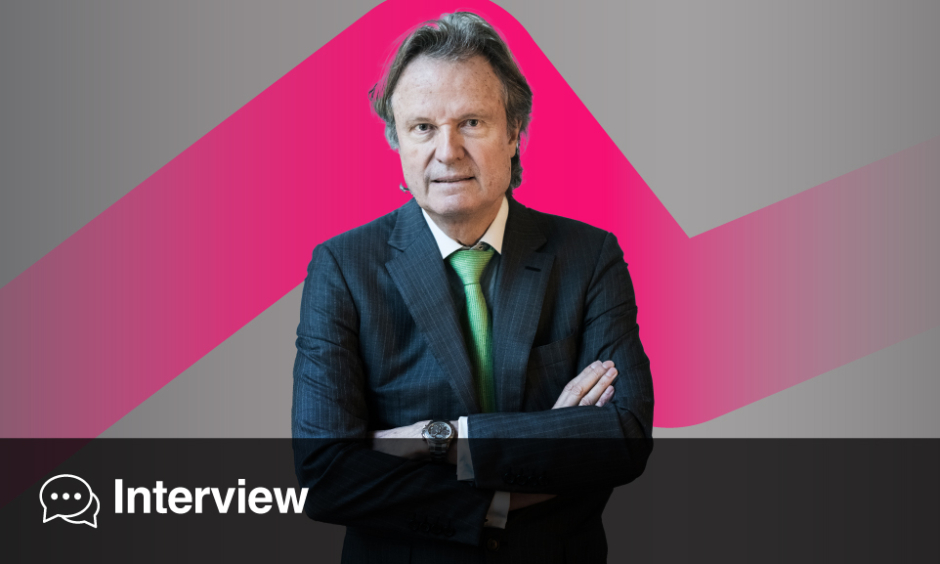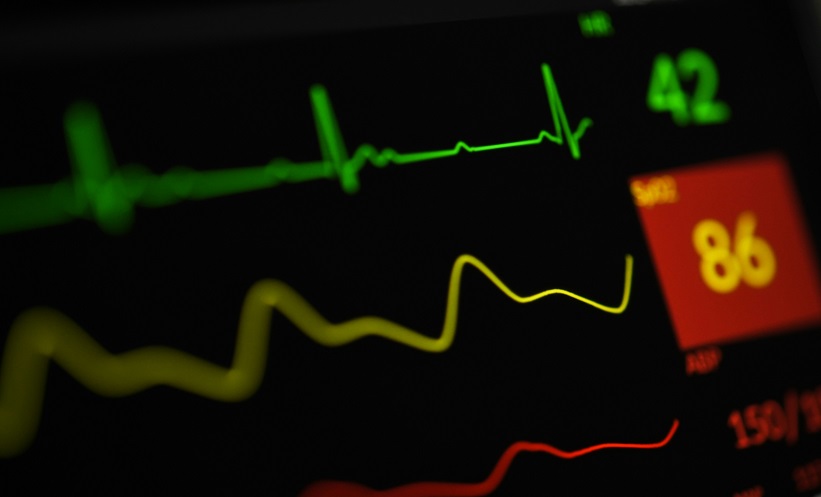Thomas Lüscher | Director of Research, Education, and Development and Consulting Cardiologist, Royal Brompton & Harefield Hospital Trust, UK; Professor of Cardiology, King’s College London, UK; President, European Society of Cardiology (ESC)
Citation: EMJ Cardiol. 2024;12[1]:57-60. https://doi.org/10.33590/emjcardiol/CVSN3021.
![]()
Congratulations on your recent election as President of the European Society of Cardiology (ESC). What are your main priorities for the organisation during your term, and how do you plan to address key issues facing European and global cardiology?
The strategy that is most important to me is digital cardiology, involving, of course, digital health in general, but in particular artificial intelligence and machine learning (AI/ML). I am convinced that this will markedly change our field, and medicine at large. I just wrote a review article covering this field;1 AI/ML has a lot of potential in imaging, pathology, biopsies, face and voice recognition for diagnosis, and algorithms for diagnosis and risk prediction as a basis for personalised medicine. This is certainly one aspect, but another priority is that we want to be more transparent about the society. We will have an induction day where all the newly elected volunteers will come to the European Heart House to learn about the governance, legal, and budgetary aspects of the organisation and get to know the staff. We have more than 230 employees, so our volunteers have to understand who does what. Further, they will learn what they can do in a specific position and decide when they have to refer to the leadership in their projects. Moreover, it is essential to understand the finances and budgeting of the society. Finally, we also want to include more societies that are a bit at the periphery of the ESC, such as Northern Africa and Middle Eastern National Cardiac Societies, as well as those of the East and Eurasia. Indeed, we would like to include them more in the future and hear what their needs and expectations are. Of note, we are a global society, we have 58 national cardiac societies and 47 affiliated cardiac societies. At our recent Annual Congress in London at the end of August, we had participants from over 80 countries. So, this is a very important strategy, to be global, not just with the journals that have already succeeded a lot at this, but with the Congress and our interactions with these parts of the world.
With such a strong focus on AI and machine learning, are there areas within cardiology where you think AI might not be as effective?
Well, it’s a neuronal network, and our brain is also a neural network. At the moment, AI is very good in terms of remembering everything because the data storage is much bigger than our brain, it can combine things very well, and it has enormous statistical and mathematical skills. Interestingly, AI systems could even learn empathy. The mirror neurons that were discovered about 30 years ago by neuroscientists in Parma, Italy, are the basis of empathy and, in principle, you could program a neuronal network accordingly as well, at least seems possible. Whether it can actually produce new ideas is, of course, a big question, maybe not. Manual skills are still very important in medicine. Robotics are not that advanced at the moment, maybe in another decade or two they will be comparable to current operators, but we’re still a bit better at manual skills, ideas, and creativity. However, for any algorithm, we have to assure that they are developed on a huge database, on good, solid data, and verified independently, ideally in another country or another area, so that we’re sure that it is good for use in medicine.
You have a broad clinical and research scope in prevention, coronary heart disease, heart failure, vascular disease, and percutaneous interventions, with over 840 original research articles and more than 200 reviews and book chapters. Over the years, how has your focus shifted, and what areas of research interest you most currently?
I started in basic science with endothelial biology, which at the time was a very, very hot topic and only pursued by a handful of scientists in the world. More recently, due to my professional activity as an interventional cardiologist, I have been interested in acute coronary syndromes. Currently, we work a lot on acute coronary syndromes, not only on how to better diagnose them but also on how to predict outcomes. In particular, cardiogenic shock is a huge unmet medical need. We have discovered a new pathway that possibly could lend itself to a trial, which we’re currently discussing. I am also looking at inflammation as a cause of plaque instability and rupture. Thanks to my current job in the UK, I have access to these huge registries that are quite unique. They’re not perfect, but they’re huge. Even though the data set is sometimes a little bit like a Swiss cheese, it still has very important scientific power because of its size. Usually, we look at registries with more than a million patients and analyse part of them, and so that is a very, very exciting new field. I created a large biobank in Switzerland of patients with acute coronary syndromes, and there we have discovered a couple of new markers, some of which are potentially involved in the disease process itself, and potentially also targets for new therapeutic strategies. Another topic that I’m very interested in is resilience. It is interesting that even if you smoke, if you have a high low-density lipoprotein, or a high blood pressure, it is not certain that you will get cancer, an infarction, or a stroke. In fact, it’s usually only half of those who have the risk factor. So, the interesting question is, why are some protected from the untoward effects, let’s say of low-density lipoprotein cholesterol? We have looked at blood vessels that are resilient to atherosclerosis because it affects mainly the coronary arteries and the periphery arteries, but the mammary artery that runs in the inside of the chest wall is completely protected. We have sequenced this mammary artery and compared it to the coronary artery and are now pursuing pathways and factors in arteries that differ in patients who are protected from atherosclerosis despite the presence of risk factors. I think that’s sort of the backside of the coin.
The Zurich Heart House, which you founded, is a major centre for cardiology research and education in Europe. How has the foundation’s work influenced the broader cardiology community, and what future initiatives have been planned?
Actually, I founded the Zurich Heart House 30 years ago this year. We trained more than 150 research fellows from around the world, and about 30 of those now have academic positions in other institutions, professorships, chairs, or are leading cardiology departments in regional hospitals. We’re very proud that we have been able to foster the careers of many promising young cardiologists. But not just cardiologists, we also trained ophthalmologists, because the blood vessels in the eye were of interest; nephrologists; and even one gynaecologist, and that’s a major achievement. Our education centre did a lot of post-graduate courses, and we have trained more than 300 young cardiologists in heart failure management through our post-graduate courses, who are now leading many heart failure units around the world. Of course, we continue to train and support, not in large congresses like the ESC, but in smaller, focused master courses. We train physicians in different countries. We have done that in Georgia, Romania, Mexico, Portugal, and India, and it’s really quite enchanting to meet these people and to make them happy that they have learnt something. My motivation for fostering young cardiologists is because you cannot win without young people. You need bright young people around you, and so this is my advice to any young person: together, you can advance the field. This is really fulfilling. Humans don’t work for money alone, they work also to have fun, and to have the sense of doing something important in their lives. At the end of your career, it’s more important what came out of your collaborations, and how much you could foster the careers of others than to publish another paper under your name.
You first attended the ESC Congress in 1988. Over the years, how has the ESC evolved, and how do you see the ESC continuing to adapt and lead in the future?
Well, it’s a fantastic story. I have written an article about this, it’s called ‘From a club of friends to an institution: past successes and future challenges for the European Society of Cardiology’.2 They founded the ESC 74 years ago, so next year we will have the 75th anniversary. It’s a privilege for me to celebrate that. The first Congress was led by John Parkinson, who described the Wolff–Parkinson–White syndrome, an inherited arrhythmia disorder. At the time, it was a small congress, and then they decided to do it every year. Initially, all the sceptics said that this would be crazy, but the annual congress became more and more successful. Then, in 1980, they started their own journal, and this has become, over the years, the number one journal in cardiovascular medicine. Then, they realised that they needed staff and a house to accommodate these collaborators, and so in Sophia Antipolis, France, they built the European Heart House. This has grown a lot, from a few dozen employees to currently 230 employees who cover different aspects of our activities, whether it’s the journals, guidelines, education programmes, or the development of projects, which are financed by the congresses (currently 10 in number), the income from the 17 ESC journals, other activities, and also in collaboration with industry. We started an advocacy office at the European level, and we certainly hope that this will eventually lead us to the possibility of having a cardiovascular health plan supported by the EU to foster research and other aspects of cardiovascular medicine. Then the journal family grew, and we now have 17 journals, covering the entire cardiovascular field. We started a textbook on cardiovascular medicine, which will now be in its fourth edition. We’ve designed it, and then we’ll also have a cut-down version for the young cardiologists who want to pass the ESC European Exam in Core Cardiology. We have close to 1,000 young colleagues who try to pass this exam every year. The ESC also wants to be more of a global player. This was achieved for the journals since I took over the ESC European Heart Journal in 2009, and the Congress is now global, but we would like to involve, as I mentioned earlier, more countries that need support in education and guidelines in their own cardiovascular health care systems.
Are there specific strategies or collaborations you’re looking to implement to ensure this collaboration with other countries?
First of all, we have large registries. One of them is called EuroHeart Registry, where the idea is to have ongoing registries, starting now, in the UK, Scandinavia, the Baltic states, places that already have registries that can be used to get continuous and representative insight on what’s going on in clinical practice. We’ve expanded it to Romania, Hungary, and Portugal, where there are existing registries in some areas. The vision is that eventually, we can cover all of the ESC member states, and then we will have the ability to nest pragmatic trials into this running registry. So, this has to grow over time. It’s expensive, and we need support from the EU, our industry partners, and foundations to provide continuous insight into the quality of care, and to provide the opportunity to test new interventions in terms of what they can achieve in the European cardiovascular community.
Reflecting on this year’s ESC Congress, what do you consider to be the most significant piece of research or the most impactful discussion?
Well, the problem was, of course, that I had so many meetings, so I was not able to listen to everything that I wanted to. But what is worth mentioning is that we had 12 hotline sessions, each of them with four to five presentations. So, more than 50 hotlines in total, many of which were published. So, it was extremely successful in providing the newest information to the audience. There were also a lot of good educational sessions for practicing clinicians. And, not to forget, the awards ceremony for young cardiologists across 11 different topics, ranging from imaging to intervention, from prevention to heart failure, and alike. This was very exciting for them, their colleagues, and their families.
What are some of the most valuable lessons you’ve learned from your extensive career in cardiology that you believe will guide your presidency at the ESC?
Well, working in the ESC is a fantastic experience. You meet the smartest and brightest people in your community, it’s extremely stimulating, and we learn from each other. When fantastic brains are assembled in these committees, on the board, and so forth, it is really a very exciting experience.







